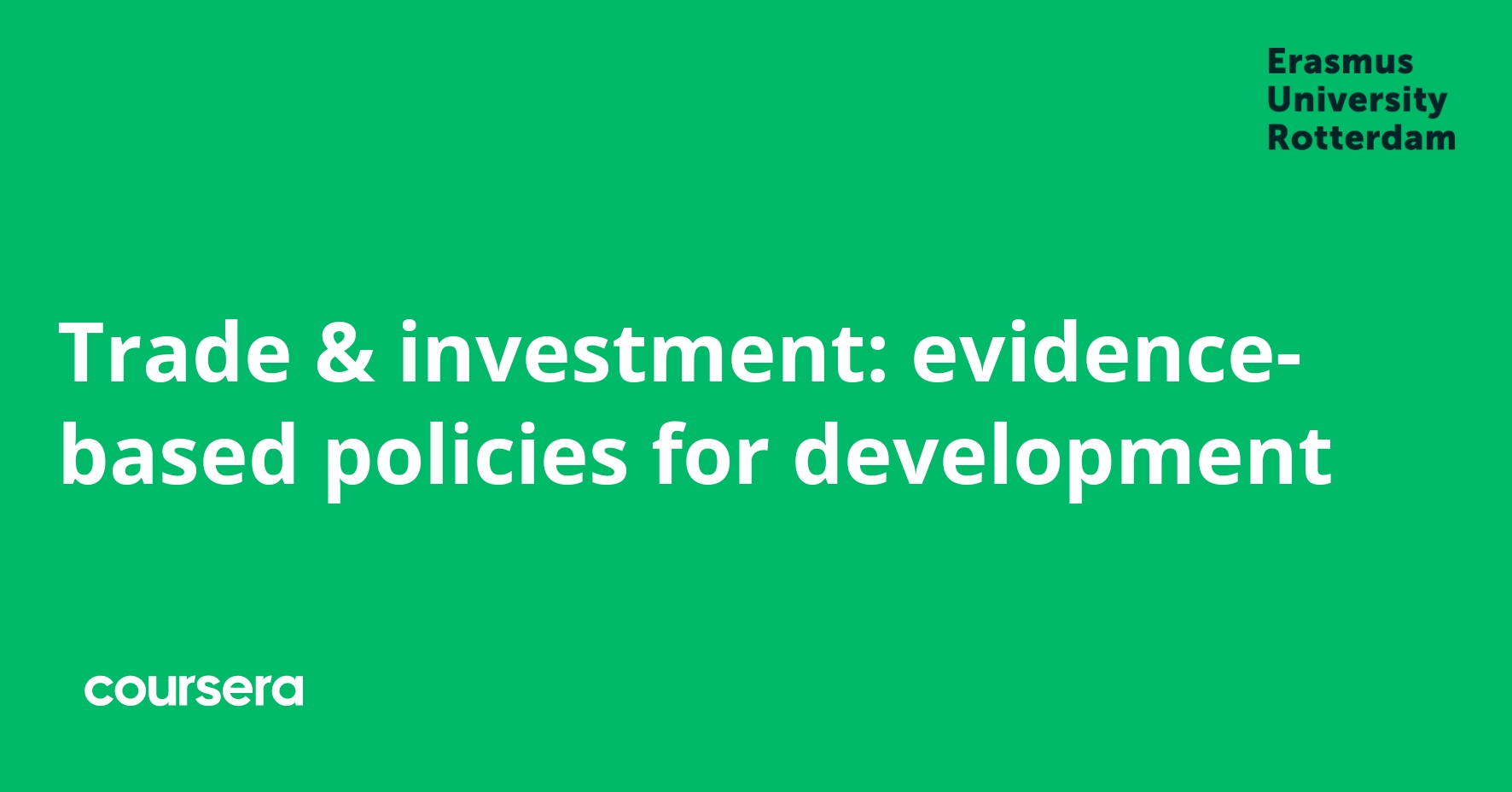Description
This MOOC prepares students that want to analyse trade and investment policies of developing countries and emerging markets. We couch you for the task of giving evidence-based policy. For students interested in policy advise the course brings a sound understanding of what can and what cannot be done with well-established theories and state-of-the-art research. For students interested in research the asset of this course is to learn how to effectively communicate research findings in a policy setting.
Upon completion, you will have a good understanding of international trade and investment theories and recent developments in the world economy and their consequence on issues related to developing countries and emerging markets. You will be able to analyse the determinants of trade and investment, to measure the impact of trade and investment and to provide evidence-based policy advice that fits development strategies in emerging markets and developing economies.
What you will learn
Theories of globalization, trade and investment
After the first week (5 video lectures), you will understand key concepts and theories of international trade and foreign direct investment (FDI) and describe recent trends in the world economy. With the debate over (de)globalization and development as our starting point, we analyze how (changes in) the economic context drive the formulation of new trade theories. We will discuss both mainstream and a selection of heterodox approaches. We explore concepts and theories related to FDI, provide an overview of FDI effects for host countries and discuss theories explaining investment activities across national boundaries.
Trade and investment policies
After the second week (4 video lectures) you will be able to identify national policies aimed at either stimulating or restricting international trade and investment. We discuss policies and instruments against the background of recent developments and provide context to the importance of negotiations and treaties that deal with policy instruments. You will be able to analyse where the use of bilateral economic diplomacy in state-to-state relationships can help to assist domestic companies as encounter difficulties abroad and where the contribution of economic diplomats is limited
Micro: Trade and productivity
After the third block (3 video lectures) you will understand the nature of internationalization, heterogeneity, and development from a micro-economic perspective. We will discuss productivity development of firms and their decision to export and import and deal with access to detailed and reliable micro-economic data sets. You will understand the microeconomic underpinnings of globalization and productivity and the process of measuring productivity development and firm heterogeneity. You will also be able to evaluate the relationship between productivity and international trade and FDI and understand the relevance of heterogeneity across firms and their productivity development and interpret their results.
Macro: Analytical tools and modelling
After the fourth block (4 video lectures) you will understand analytical tools and gravity modelling dealing with evaluation of trade and/or investment policies. The Block starts with Balassa’s index of revealed comparative advantage, the Herfindahl Hirschman concentration index, and the Grubel Lloyd index that measures intra-industry trade. You will be able to apply these indicators and relate them to real-world trade issues. Next, we discuss the historical development of the gravity model, which was originally developed in the Netherlands. Finally, you will be able to evaluate challenges and propose solutions to obtain reliable estimates of gravity modelling. Building on solutions proposed to avoid empirical gravity estimation biases, you will experience and experiment with evaluations of trade policies, dealing with time and cost of border documentation and processing for exporting and importing.








